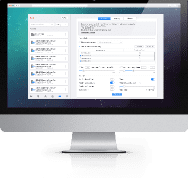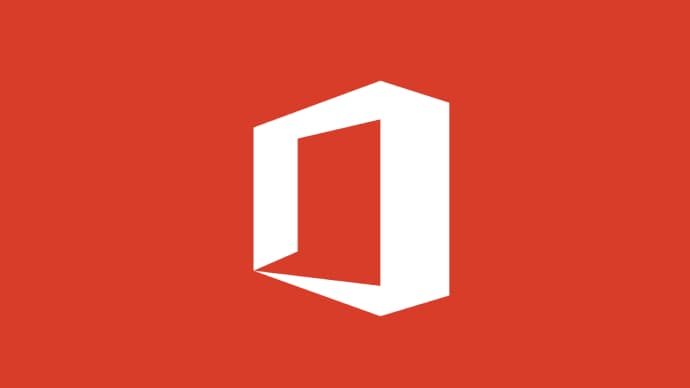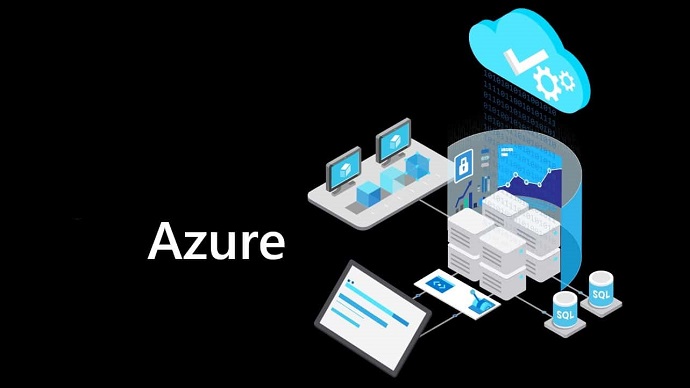Use VCE Exam Simulator to open VCE files

220-1101 CompTIA Practice Test Questions and Exam Dumps
A user is trying to play a DVD on a projector. The audio is playing correctly, but the projector displays an error message that reads:
What is the most likely cause of this error?
A. The HDMI cannot carry the signal from the DVD to the projector.
B. The user needs to switch from HDMI to a cable standard such as DisplayPort.
C. The projector does not support the necessary HDCP protocol.
D. The user needs to enable copy-protected sources in the projector’s settings.
The error message "HDMI Blocked due to Copy Protection" suggests a problem related to content protection protocols when trying to transfer digital content over HDMI. This type of issue is commonly related to HDCP (High-bandwidth Digital Content Protection), a security protocol used to prevent illegal copying of digital content, such as movies on DVDs or Blu-ray discs. Let’s break down why HDCP is most likely the root cause:
HDCP is a form of digital copy protection designed to prevent the unauthorized copying of digital content as it is transmitted over digital connections like HDMI. When a source device (such as a DVD player) is trying to send encrypted content to a display device (like a projector), both devices must support HDCP. If either device does not support HDCP or if there is an issue with the HDCP handshake between the two devices, the signal will not pass through, resulting in a “Blocked due to Copy Protection” message.
If the projector does not support HDCP, the DVD player will not be able to send the encrypted content to the projector, and it will block the video signal. This is the most common reason for the error message seen in the scenario.
Option A: HDMI can carry the signal from the DVD player to the projector. The error is not due to the HDMI signal being unable to transfer, but due to the copy protection not being supported.
Option B: Switching from HDMI to DisplayPort is not a solution because the issue is related to HDCP, which applies to digital signals like HDMI or DisplayPort. The problem will remain even with a different cable standard.
Option D: There is no setting to enable copy-protected sources on the projector. The issue is technical (lack of HDCP support) rather than a setting that needs to be turned on or off.
To resolve this issue, the user needs to ensure that both the DVD player and the projector support HDCP. If the projector does not support it, the user may need to replace the projector with one that supports HDCP or use a device like an HDCP-compliant splitter to bypass the protection. Alternatively, the user could connect the DVD player to a different HDMI-compatible device (such as a TV) that supports HDCP.
A technician is implementing a non-carrier-grade wireless backhaul and notices that the current channel selection is extremely polluted with various RF signals. Upon performing a spectral analysis, the technician discovers a channel with almost no RF pollution. Unfortunately, the technician is unable to select that channel.
What is the most likely reason that the technician cannot select the cleaner channel?
A. The channel is reserved for licensed band use.
B. The channel selection is defective; contact the manufacturer.
C. The channel must be unlocked by the vendor.
D. The device requires a firmware update to unlock the channel.
In wireless communications, certain channels are often reserved for specific uses, such as licensed spectrum bands. These bands are regulated by authorities (like the FCC in the United States) and are allocated to licensed users, such as telecom companies, for specific purposes like cellular networks or broadcasting. Here’s a breakdown of why Option A is the most likely reason:
Certain frequencies are reserved for licensed use only, and unauthorized devices are not permitted to operate on these frequencies. These channels are typically protected and can only be used by specific entities that have obtained a license to do so. In this case, the technician’s discovery of a clean channel with minimal interference is likely one of these licensed bands.
The clean channel that the technician has discovered may be reserved for use by entities that have obtained a license to operate on it. As a result, the technician's device would not be able to select or use that channel without violating regulations. This is the most likely reason for the inability to select the channel.
Option B: A defective channel selection is unlikely. The channel may be unavailable due to regulatory reasons, not because of a defect.
Option C: There is no indication that the channel needs to be unlocked by the vendor. It’s more likely that the channel is restricted due to licensing regulations.
Option D: While a firmware update could sometimes resolve certain issues, the most likely cause in this scenario is regulatory restrictions on the use of certain channels.
The technician is likely encountering a situation where the channel they wish to use is reserved for licensed users. In such cases, using the channel would require a proper license or the use of an unlicensed band for their application. If the technician cannot select the channel due to regulatory restrictions, they will need to choose a different, unlicensed channel for the wireless backhaul.
A user has submitted a support ticket stating that all printouts from their laser printer are showing double images imposed on them. Upon reviewing the printer's history, the technician finds that the printer's maintenance kit has not been replaced in over a year.
Which of the following printer consumables is most likely causing the issue of double images on the printouts?
A. Separation pad
B. Transfer roller
C. Ink cartridge
D. Fuser
To understand why the fuser is the most likely cause of double images, it's essential to understand how a laser printer works and how its components function. The fuser plays a critical role in bonding the toner to the paper, and if it is malfunctioning, it can lead to issues such as double imaging on printouts.
The separation pad is responsible for separating sheets of paper as they move through the printer. If the separation pad fails, it could cause paper jams or misfeeds, but it would not cause double imaging. A failure of this component typically results in problems like paper feeding issues, where the printer might grab multiple sheets of paper at once. However, it doesn’t affect the toner application, so it's unlikely to cause double images.
The transfer roller helps transfer toner from the drum to the paper. A malfunctioning transfer roller can lead to toner smudging, streaking, or uneven toner distribution on the printout, but not double images. If the transfer roller were the issue, you might see toner marks or smears rather than the double images described in the problem. Therefore, while it affects print quality, it doesn’t directly cause double images.
In laser printers, the consumable part that holds the toner is called a toner cartridge, not an ink cartridge. The toner cartridge can lead to issues like toner running out, uneven toner distribution, or even fading prints, but it would not cause double images. Since the issue is described as double images, and the toner cartridge isn't mentioned as being the cause, this is not the right choice.
The fuser is one of the most crucial components in a laser printer. It applies both heat and pressure to bond the toner onto the paper. Over time, if the fuser starts to wear out, it can cause several printing issues, including toner being applied incorrectly. A common issue with a failing fuser is that it can reapply toner inappropriately, leading to double images on the printouts. Since the printer's maintenance kit has not been replaced in over a year, it’s likely that the fuser is worn out and needs to be replaced. Double images are a typical sign of this problem.
The fuser (Option D) is the most likely cause of the double images on the printouts. The fuser’s role in bonding toner to paper is essential, and a worn-out fuser can lead to incorrect toner application, which results in issues like double images. Replacing the maintenance kit, which includes the fuser, should resolve the issue.
A technician is configuring a workstation to function as a Virtual Machine (VM) host. After installing the necessary virtualization software, the technician encounters an issue: no VMs can be created on the machine.
Which of the following actions should the technician take to resolve the issue and enable VM creation?
A. Disable the BIOS password.
B. Enable TPM (Trusted Platform Module).
C. Enable multithreading.
D. Enable Fast Startup.
The issue that the technician is facing is related to the ability to create virtual machines (VMs) on the workstation. Virtualization software, such as VMware or Hyper-V, relies on certain hardware features being enabled in the system's BIOS. One crucial feature for virtualization to work effectively is multithreading.
Let’s break down the reasoning:
Multithreading is a feature of modern processors where each core of the processor can execute multiple threads simultaneously, increasing the CPU’s ability to handle multiple tasks at once. For virtual machines, multithreading allows each VM to make use of the processor’s multiple threads, which can significantly improve performance and allow the virtualization software to properly manage VMs.
When setting up a workstation to host VMs, it’s essential that the processor’s multithreading feature is enabled. If multithreading is disabled in the BIOS, the system will not be able to allocate the necessary processing power to run virtual machines. This is the most likely cause of the issue the technician is encountering. Enabling multithreading allows the system to efficiently allocate resources to run multiple VMs.
Option A (Disable the BIOS password): The BIOS password is unrelated to the ability to create virtual machines. The password is typically set for security purposes and does not affect hardware features required for virtualization.
Option B (Enable TPM): TPM (Trusted Platform Module) is a hardware-based security feature that encrypts sensitive data, such as BitLocker encryption on Windows. While TPM can be useful for security purposes, it is not required to create or run virtual machines.
Option D (Enable Fast Startup): Fast Startup is a feature in Windows that reduces boot time by saving a part of the system state to a hibernation file. It does not affect the functionality of virtualization or the ability to create virtual machines.
The technician should enter the BIOS setup during the system’s boot process and ensure that multithreading (also referred to as Intel Hyper-Threading Technology or AMD Simultaneous Multi-Threading) is enabled. Once this is done, the technician should be able to create and run virtual machines without issue.
A user’s computer is not receiving a network connection. After confirming that the connection appears to be down, the technician proceeds to check the user’s port on the patch panel. However, the port and corresponding patch panel are not labeled, making it difficult to identify the correct port.
Which of the following network tools should the technician use to identify the port?
A. Network tap
B. Punchdown tool
C. Toner probe
D. Crimper
The technician’s challenge is to identify the correct network port on a patch panel where the user's network connection is located. The port is not labeled, and the technician needs a reliable tool to trace the cable to the correct port.
A toner probe is a diagnostic tool commonly used by technicians to trace and identify cables and network connections. The toner emits a signal that travels through the cable, while the probe is used to detect this signal at the other end of the cable. The technician can use the toner probe to trace the cable from the patch panel to the user's workstation, ensuring they are connecting to the correct port.
A toner probe is specifically designed to address this kind of issue. By connecting the toner to the patch panel and using the probe to detect the signal at the user's workstation, the technician can accurately identify the correct port. This tool is highly effective when ports are not labeled or when cables need to be traced in a large or complex setup.
Option A (Network tap): A network tap is a device used for monitoring network traffic between devices. It is not useful for identifying or tracing cables, and it does not help locate the correct patch panel port.
Option B (Punchdown tool): A punchdown tool is used for terminating network cables into keystone jacks or patch panels. It is not designed to trace or identify cables. Instead, it helps with physical connection tasks.
Option D (Crimper): A crimper is used to attach connectors (like RJ45 connectors) to the ends of network cables. It is not used for tracing or identifying ports on a patch panel.
The technician should use the toner probe to identify the correct port on the patch panel. This tool will help trace the cable and ensure the technician connects to the correct network port, restoring the user’s network connection.
Related Exams

Top Training Courses











SPECIAL OFFER: GET 10% OFF
This is ONE TIME OFFER

A confirmation link will be sent to this email address to verify your login. *We value your privacy. We will not rent or sell your email address.
Download Free Demo of VCE Exam Simulator
Experience Avanset VCE Exam Simulator for yourself.
Simply submit your e-mail address below to get started with our interactive software demo of your free trial.